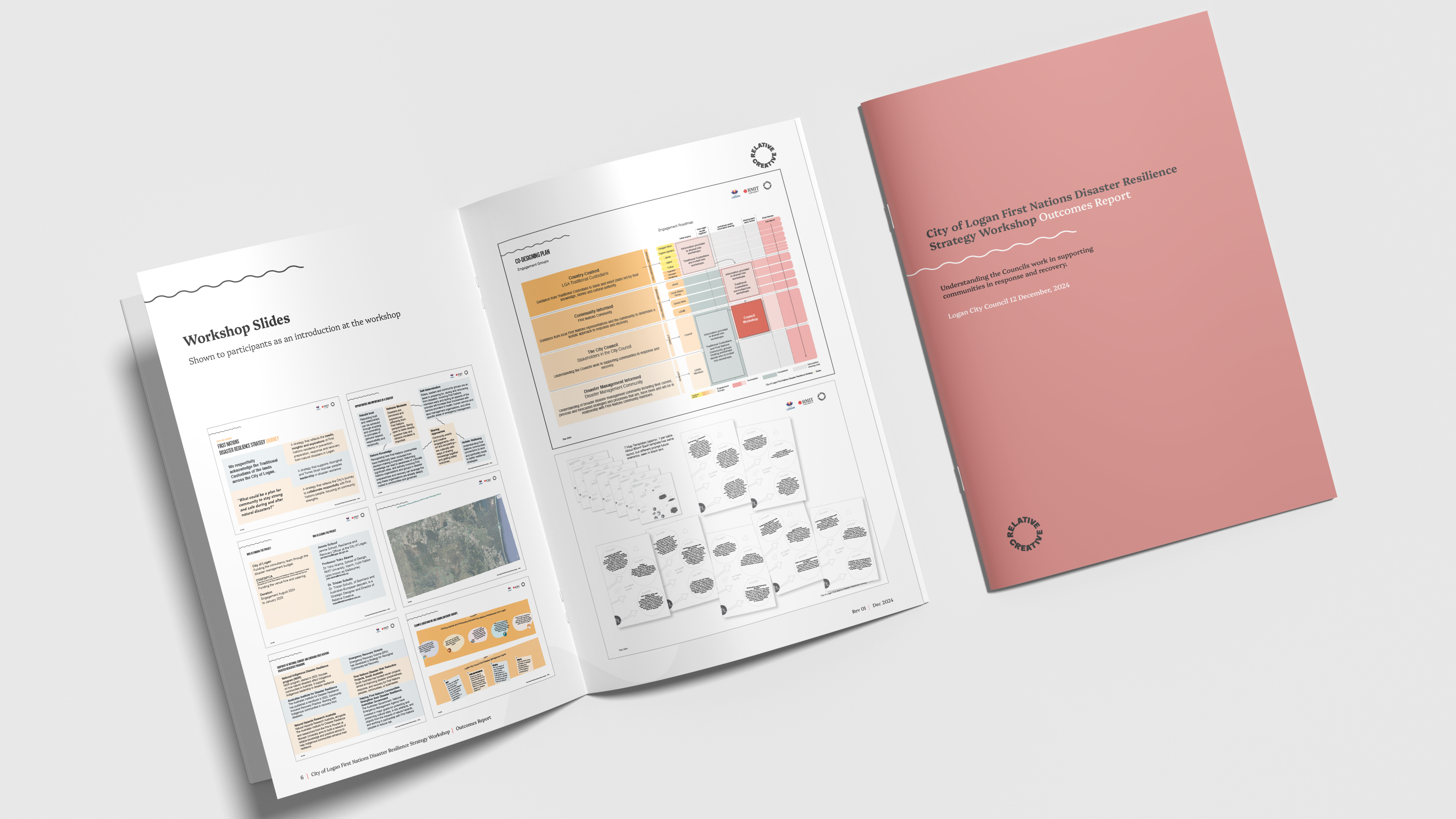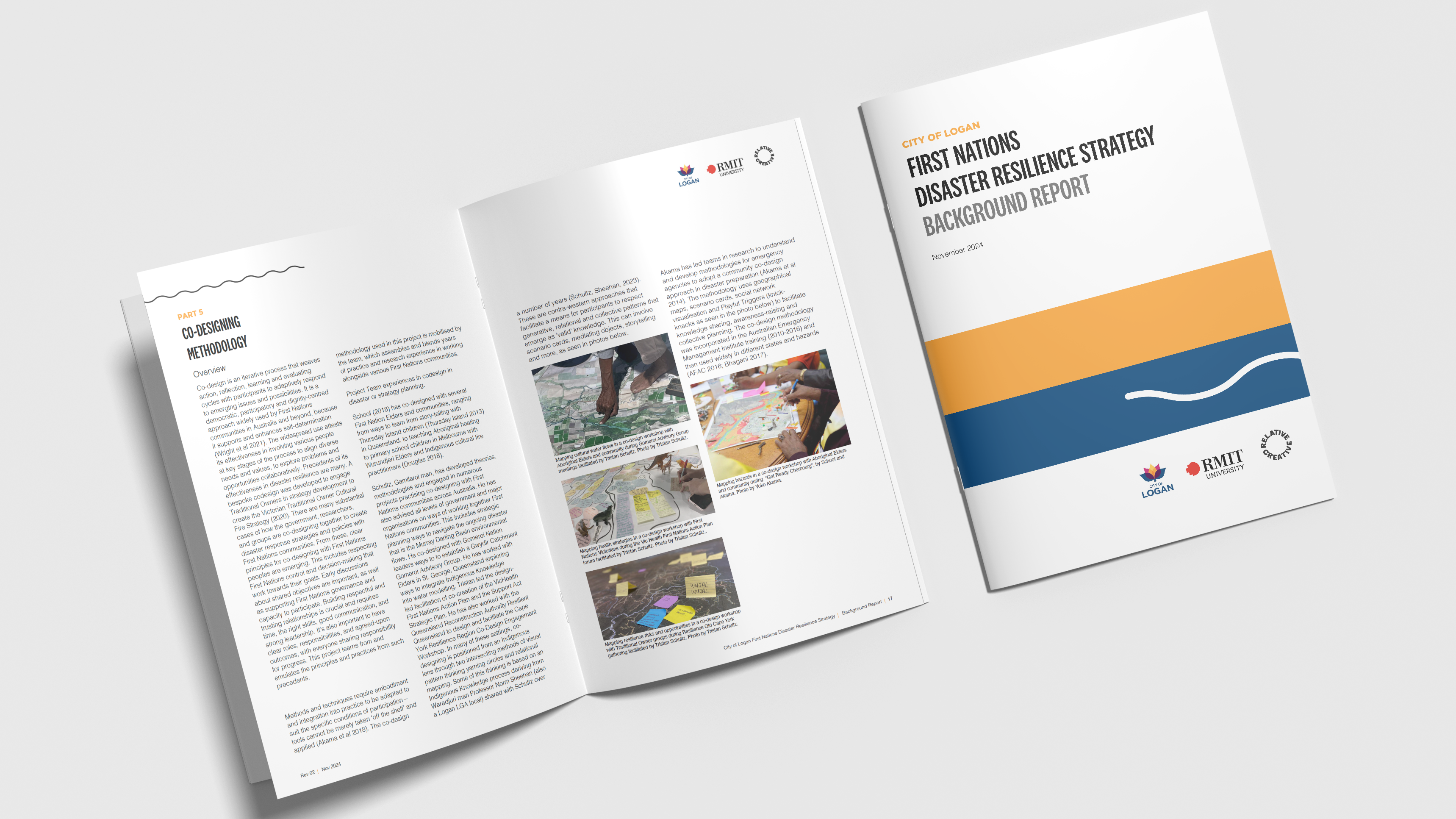City of Logan First Nations Disaster Resilience Strategy.
Background
Natural disasters are increasing in frequency and severity across Australia, impacted by climate change. The subtropical climate and diverse landscape of the City of Logan means the city experiences, and will increasingly experience, a variety of natural disasters. The most common hazards are bushfires, floods, heatwaves, landslides, severe weather (storms, cyclones, east coast lows). The First Nations community is impacted disproportionately by these disasters, as a result of history and ongoing experiences of marginalisation and discrimination
The City of Logan, with additional funding from the Department of Treaty, Aboriginal and Torres Strait Islander Partnerships, Communities, and the Arts, initiated the First Nations Disaster Resilience Strategy. The City engaged Prof. Yoko Akama and Dr. Tristan Schultz to co-develop the program and strategy with the community. Together, we have undertaken a co-design plan and background information to inform a City of Logan First Nations Disaster Resilience Strategy. It has taken shape through research of published sources, consultant expertise, and continued conversations with the Logan First Nations community.
Opportunity for futures
This project starts with the understanding that there are proven First Nations-driven approaches to how communities and First Nations community-organisations are responding to disasters; showcasing a diversity of inspiring resilience and regeneration in disaster contexts, when First Nations governance and self-determination leads the way.
Approach
The team created a co-design protocols document to ensure cultural safety and adherence to best-practice ICIP standards. Initial conversations commenced with leading community groups. A peer-reviewed and desktop analysis report was developed, covering First Nations disaster resilience in Logan and across Australia, challenges, opportunities, and co-design principles. A tailored plan outlined how groups wished to engage, who to involve, and methods such as yarning, creative mapping, and roundtables. Workshops occurred and drafts and workshop reports were shared with participants for feedback before finalisation of a completed Strategy.

